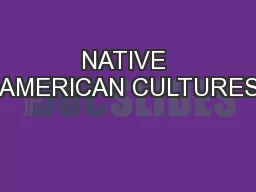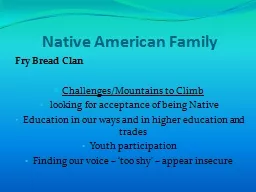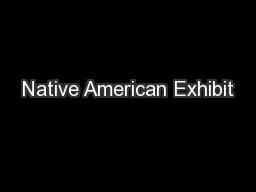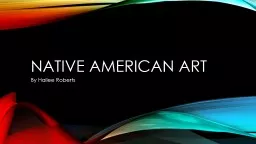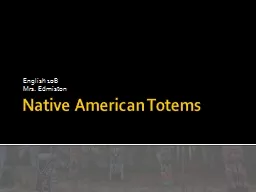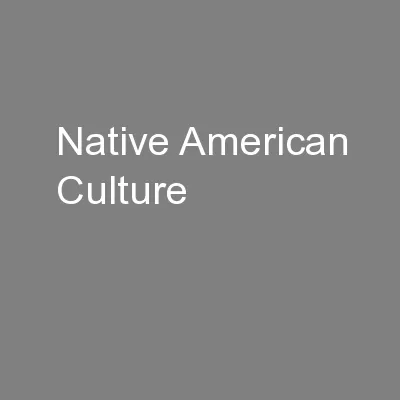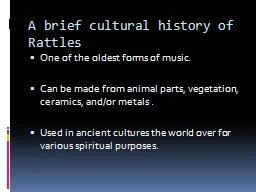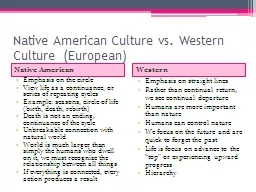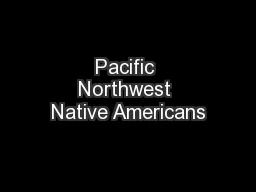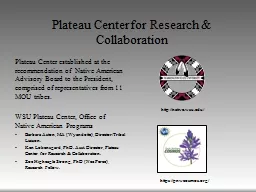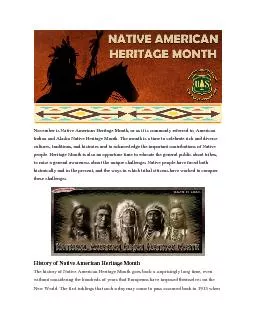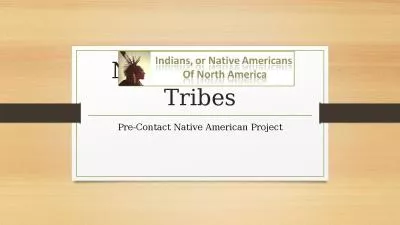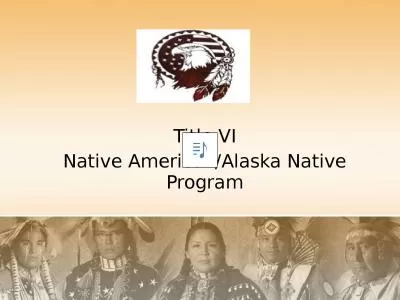PPT-NATIVE AMERICAN CULTURES
Author : jane-oiler | Published Date : 2018-11-01
EARLY SOCIETIES NATIVE AMERICAN CULTURE AREAS SHARED BELEIFS I CAN Identify 2 types of Early Societies in North America and Explain where and how they lived Define
Presentation Embed Code
Download Presentation
Download Presentation The PPT/PDF document "NATIVE AMERICAN CULTURES" is the property of its rightful owner. Permission is granted to download and print the materials on this website for personal, non-commercial use only, and to display it on your personal computer provided you do not modify the materials and that you retain all copyright notices contained in the materials. By downloading content from our website, you accept the terms of this agreement.
NATIVE AMERICAN CULTURES: Transcript
Download Rules Of Document
"NATIVE AMERICAN CULTURES"The content belongs to its owner. You may download and print it for personal use, without modification, and keep all copyright notices. By downloading, you agree to these terms.
Related Documents

